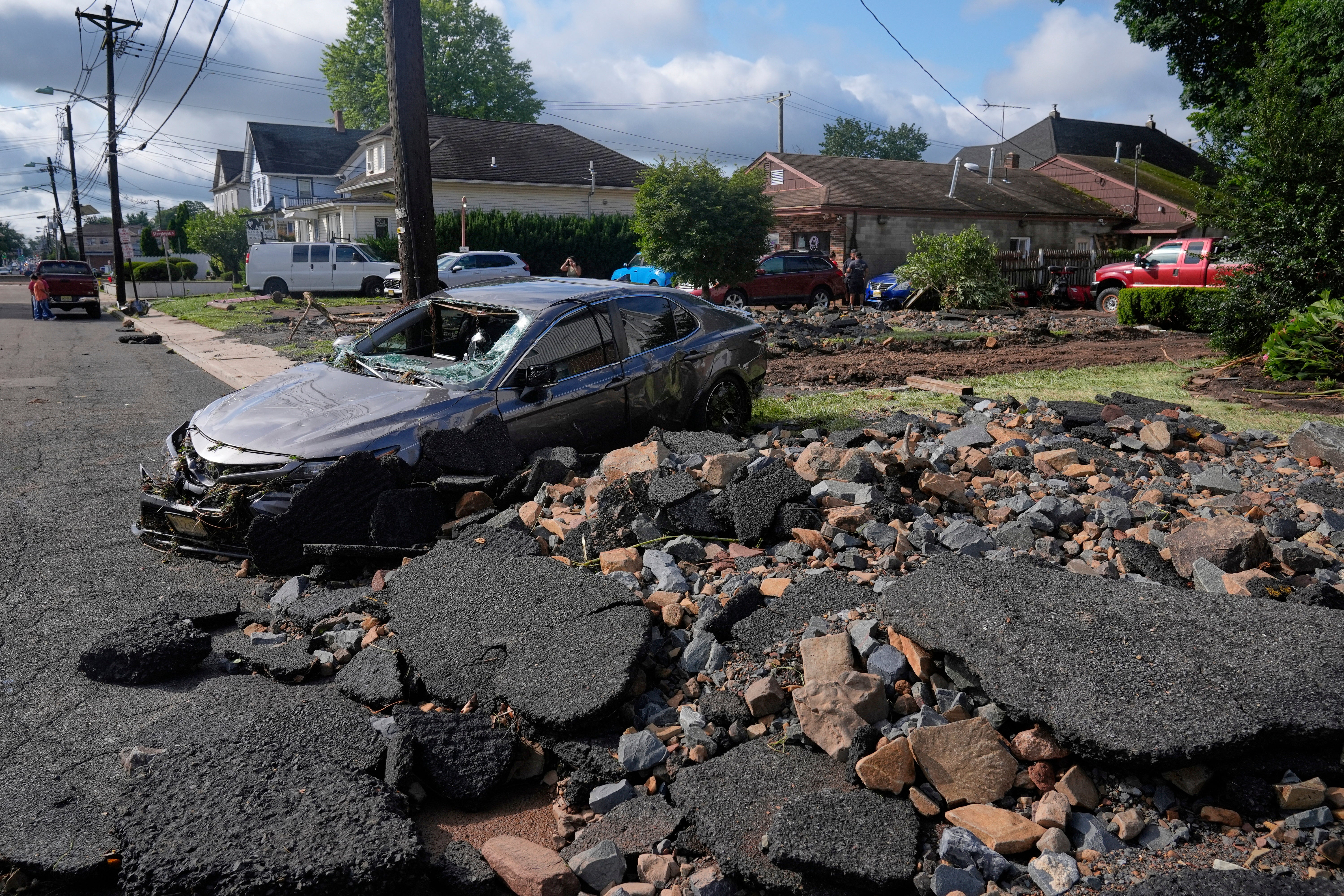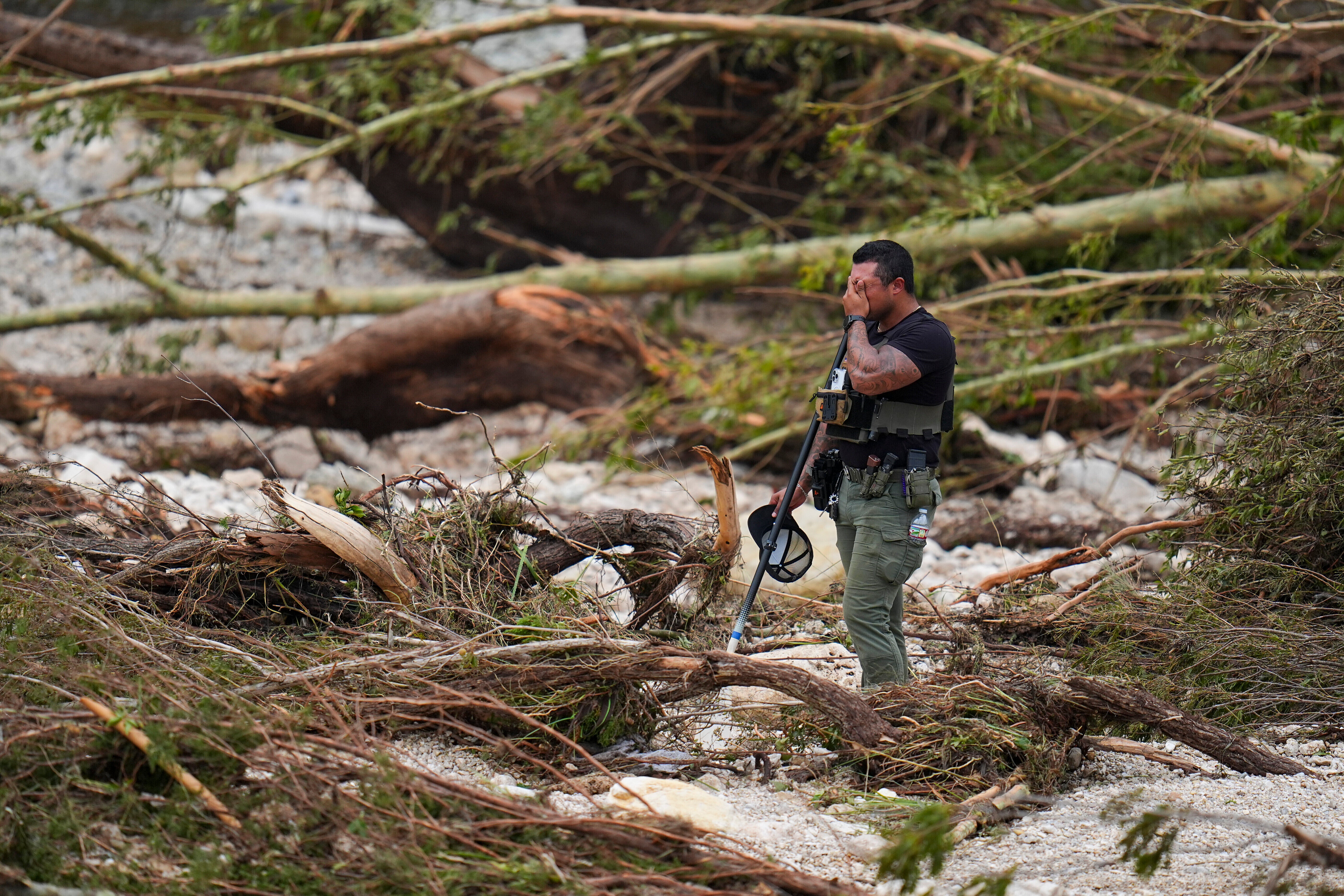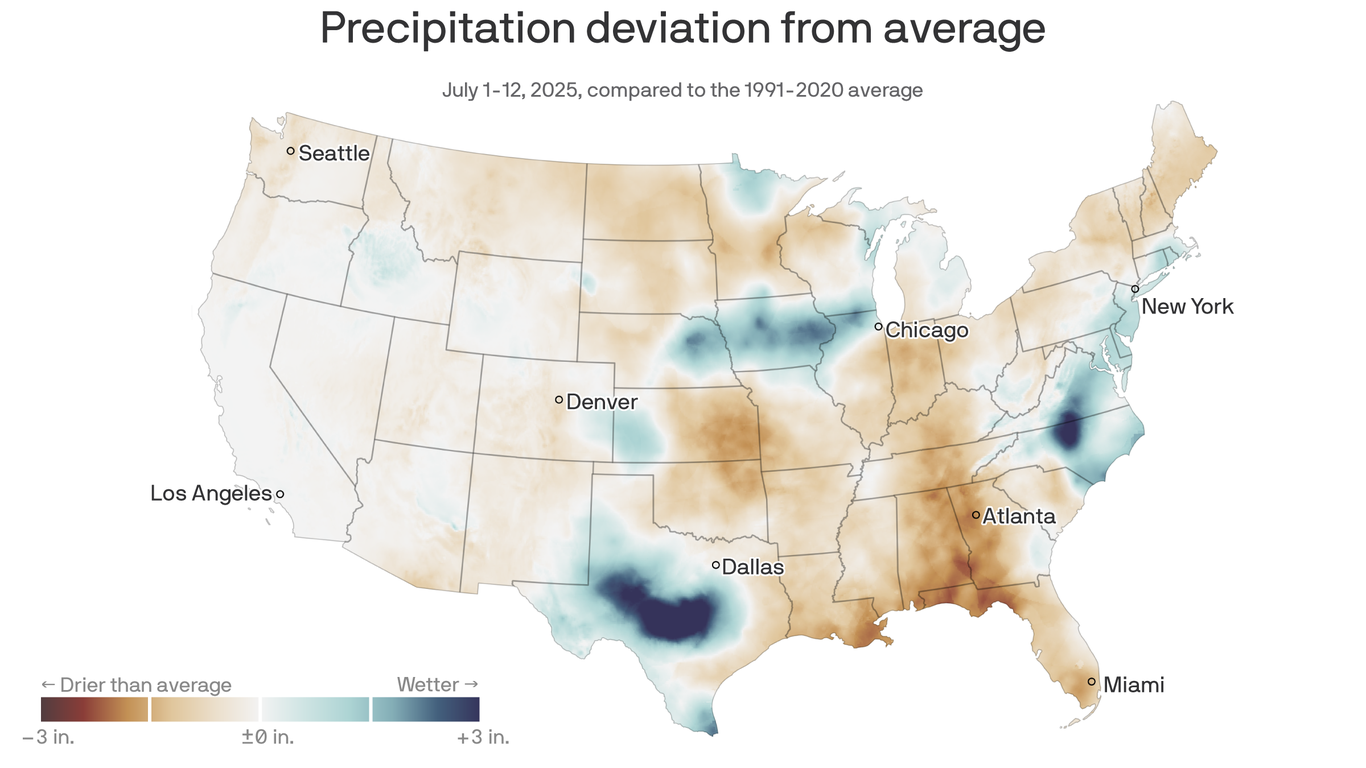The country has been rocked by severe flooding in recent weeks — and climate change is making it even more dangerous, according to a report.
This week, torrential rain slammed New York and New Jersey, leaving two dead.
Last week, heavy rain from Tropical Storm Chantal ravaged North Carolina, displacing 60 and killing at least six.
The search in Texas for more than 100 missing continues after what officials called a “once-in-century flood” struck the state, claiming at least 134 lives.
The latter two events are considered “1,000-year floods,” meaning there’s a 0.1 percent likelihood they will occur in any given year, according to AccuWeather. Climate change is likely the reason that such intense floods are occurring at an exponential rate, NPR first reported.

For one, climate change is intensifying rainfall. The heaviest rainstorms in Texas now dump about 20 percent more water than in the 1950s, according to the National Climate Assessment.
Similarly, as videos captured New York City’s subway gushing with water, Rohit Aggarwala, the city’s climate chief, told the New York Times. “It is now the case that five of the most intense rainstorms in New York City’s history have taken place in the last four years,”
That’s largely because warmer atmospheres allow for more water vapor, leading to an uptick in “precipitation extremes,” the assessment found.
As the atmosphere continues to warm, extreme weather events become even more likely. Warmer atmospheric temperatures could also drive an increase in short-duration extreme rainfall, according to the assessment.

In Texas, the Guadalupe River surged from 8 feet to 29 feet in a matter of hours due to the amount of rainfall.
Although it’s too soon to tell how much of a role climate change played in this month’s deadly floods, an initial analysis by ClimaMeter scientists revealed that natural variability could not have alone been responsible for the magnitude of the heavy rainfall that led to the Texas floods.
Some states rely on rainfall reports that are 50 years old, NPR reported in 2022. Given the warming atmosphere, those numbers are often quite outdated, affecting cities’ abilities to prepare for disasters.
.jpeg)
Before the 1960s in Harris County, Texas, about 13 inches of rain dropped during extreme storms; that number was at 18 inches in 2018, NPR reported. The difference means one-third of the major roads and highways in Harris County are now vulnerable to flooding, according to the outlet.
Asked at a press conference about the delayed alerts in Texas just before floods struck, after it was too late to evacuate for many, Department of Homeland Security Secretary Kristi Noem blamed “ancient” technology.
“When President Trump took office… he said he wanted to fix [that], and is currently upgrading the technology,” Noem said. “And the National Weather Service has indicated that with that and NOAA, that we needed to renew this ancient system that has been left in place with the federal government for many, many years, and that is the reforms that are ongoing.”
NOAA has said it is updating its systems to account for climate change.

Physical systems are also not prepared for these extreme weather disasters. For example, New York City’s sewer system, which is over 100 years old and also handles storm water runoff, can handle about 1.75 inches of rain per hour. “The pipes were designed for a certain amount of water. A lot more water fell from the sky,” Aggarwala told the Times of the flooding this week.
Floods are not only extremely dangerous but they’re also costly.
Flooding from 1988 through 2021 caused $230 billion in damages — 37 percent of which was attributable to climate change, according to a 2024 National Centers for Environmental Information report.









 English (US) ·
English (US) ·